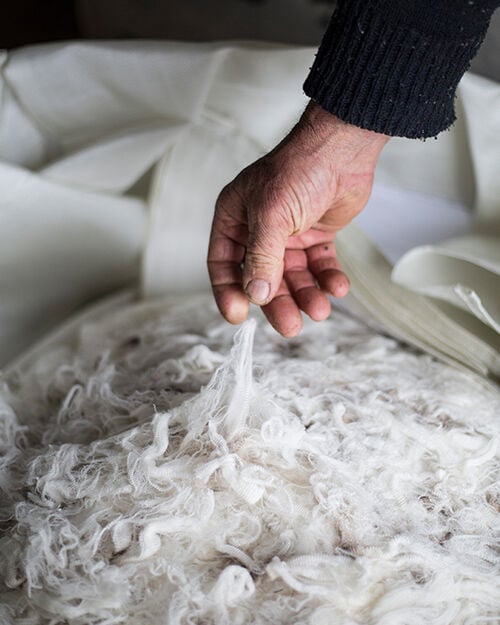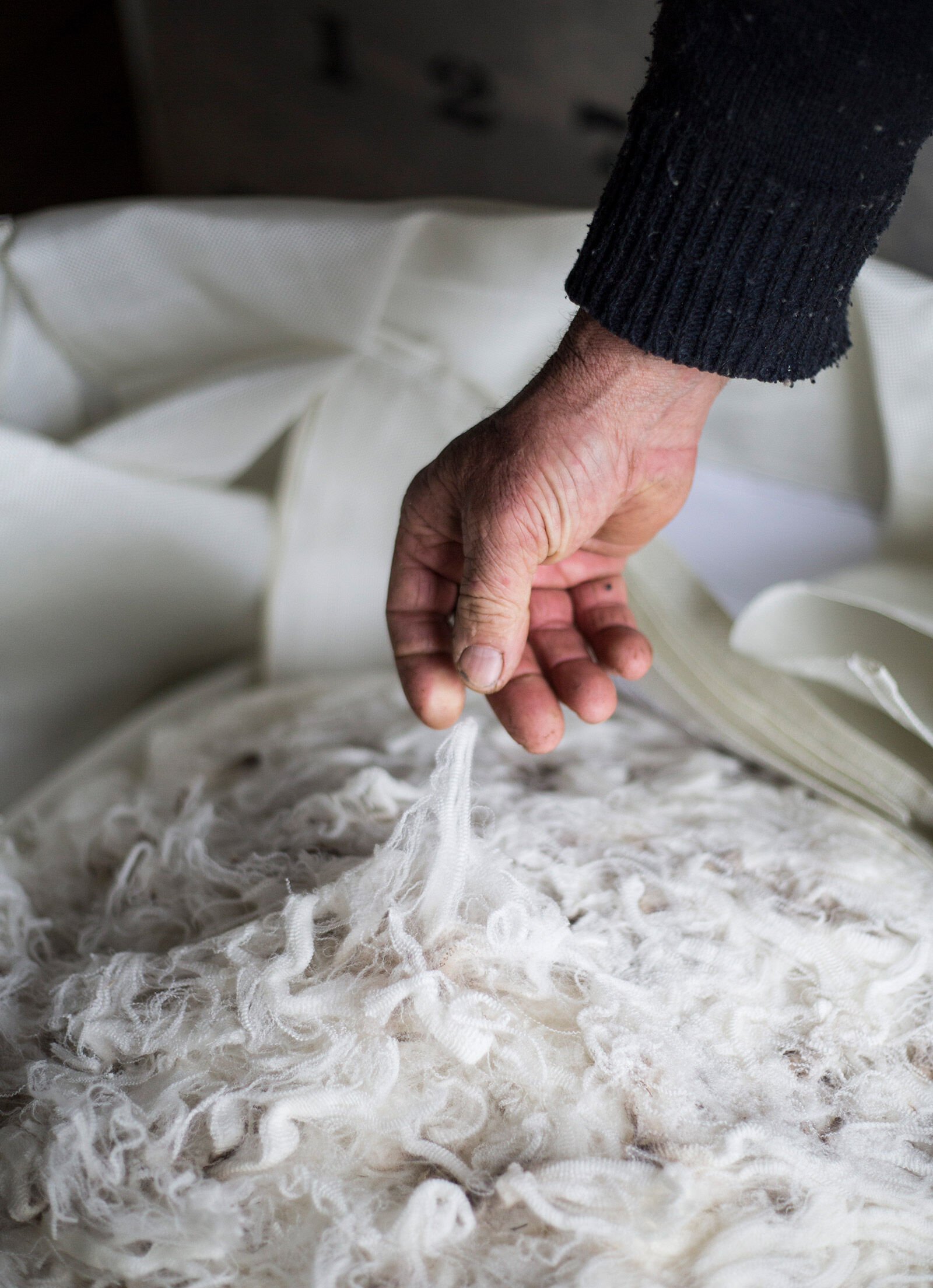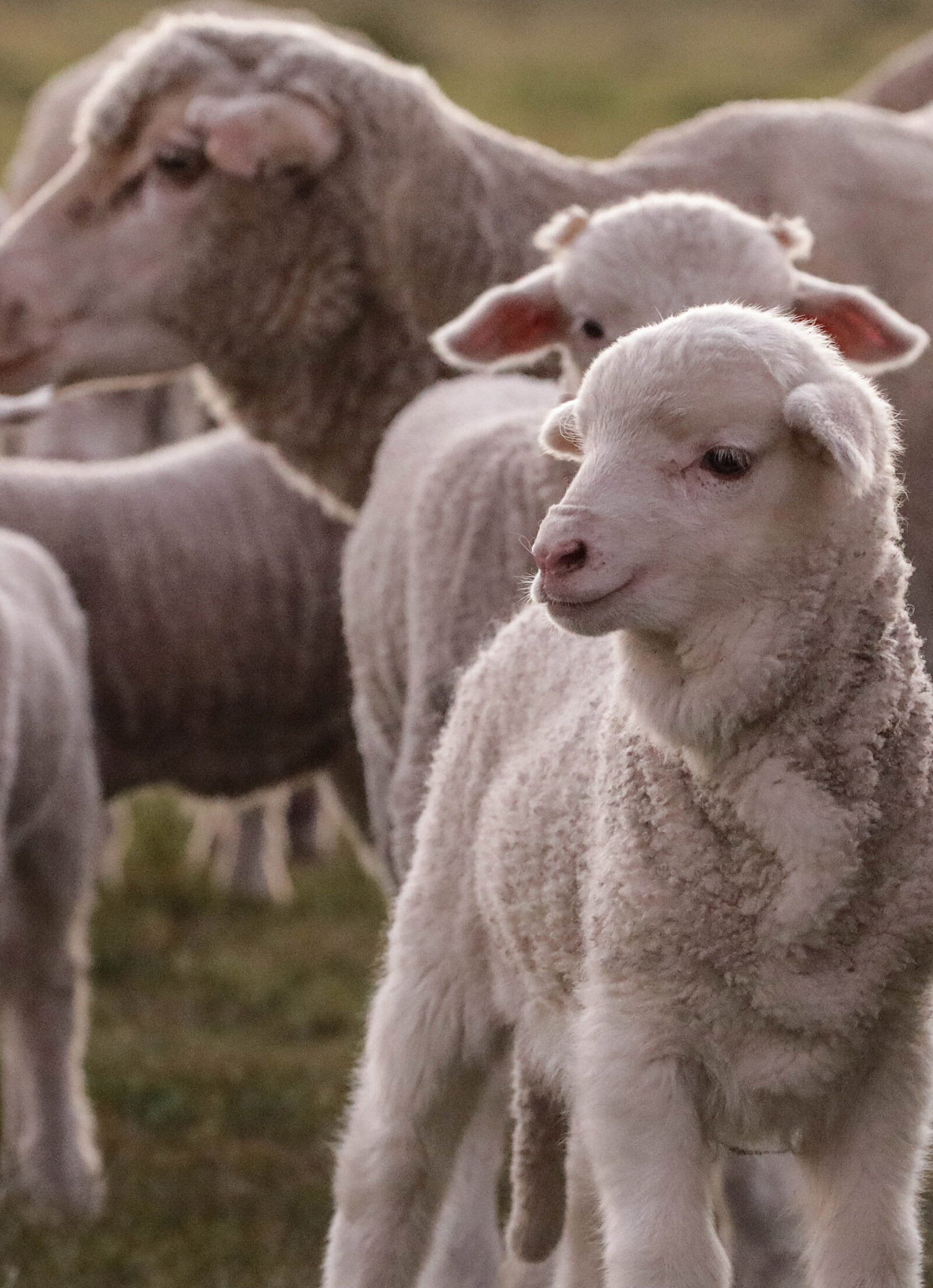Regenerative Sourcing
The fashion industry relies on Mother Earth to grow our materials. However, conventional farming and agricultural production methods have long-term impacts on soil health, the natural environment and the people who depend upon it. The heavy usage of machinery, chemicals and harsh management techniques leave the soil in a devastating state of degradation – stripping it of nutrients and its ability to support life on land, with global impacts.
The future of fashion necessitates regenerative sourcing – a nature-positive approach to farming and fibre production that ensures the process does not destroy land and soil, but instead rebuilds and restores it. It is a holistic method of farming that focuses on soil fertility and enhancing biodiversity, whilst capturing and storing carbon from the atmosphere. This actively fights climate change and improves the livelihood of local communities and farmers.
We want to accelerate the change to regenerative and restorative approaches, advancing systems away from conventional, unsustainable processes.
What is ‘nature-positive’?
Nature-positive is the new global goal for our planet; arising out of the 2021 G7 summit negotiations amongst our world leaders, there is a new consensus that: “Our world must not only become net zero, but also nature-positive, for the benefit of both people and the planet.”1
According to the University of Cambridge’s Nature Positive Hub, “Nature-positive is the term used to describe a world where nature – species and ecosystems - is being restored and is regenerating rather than declining. A nature-positive economy is one in which businesses, governments and others take action at scale to minimise and remove the drivers and pressures fuelling the degradation of nature, to actively improve the state of nature itself and to boost nature’s contribution to society.”2
How does regenerative sourcing fit in?
‘Regenerative’ is all about restoration and working with nature to return it to its natural reproductive state. It is estimated that a third of Mother Earth’s soil is degraded due to ‘intensive conventional farming methods’3 and it is thought that 90% of soil may be degraded in 30 years from now.4
Using a regenerative method of fibre production is all about science-based restoration. It places the health of soils and nature at the centre – with minimal tillage and protecting the soil surface, rotation and cover crops, plant diversity, livestock integration, maintaining living roots and fewer artificial additives. At the same time, it creates measurable social and economic benefits for farmers and local communities.
The positive impact of regenerative sourcing
Foundational to regenerative agricultural methods is restoring soil to its healthy and organic state, so that it is capable of producing a full suite of ecosystem services like carbon sequestration and improved water retention.
Eight key benefits of regenerative agriculture:
- Actively restores soil nutrients
- Increases soil’s ability to store water and carbon
- Increases the resilience and reliability of crops
- Improves overall productivity and farmers’ wellbeing
- Helps to combat climate change through carbon sequestration
- Improves watershed functioning
- Uses little to no pesticides, fertilisers or insecticides
- Enhances and increases biodiversity
Healthy soil is the basis for a holistic, healthy habitat for all of Mother Earth’s creatures. It helps to maintain soil organism diversity that in turn helps to control plant disease, insect and weed pests, recycle plant nutrients and improve soil structure.
By improving soil health, we can tap into the potential of carbon sequestration – actively storing carbon within soil to mitigate climate change. Organic soil matter has the ‘potential to hold more than three times the amount of carbon as the atmosphere’3.
Why now?
Almost 90% of global deforestation has been driven by agriculture and farming production (FAO, 2022).5 Additionally, 80% of the Amazon’s deforestation is due to cattle and beef farming as well as leather production (WWF). 6
The United Nations announced the Decade on Ecosystem Restoration as a global rallying cry to heal our planet7 – calling for the protection and revival of ecosystems around the world, for the benefit of people and Mother Earth.8
Aiming to prevent, halt and reverse the degradation of ecosystems on every continent and in each ocean, this initiative can help to end poverty, combat and counteract climate change and prevent a mass extinction. However, it will only succeed if everyone plays a part. And we must start today to protect our shared tomorrow.
Transitioning production practices for the fashion industry’s materials away from their current unsustainable and degrading state requires a shift to more conscious, regenerative practices.
The Future of Fashion
Our goal is for all our virgin natural fibres to be sourced using regenerative materials, backed by scientific measurements and data.
We are not there yet, but we are on our way.
Our partnerships and commitments
SOKTAS
Together with our partner SOKTAS, we have helped to implement regenerative agricultural practices with cotton farmers in Turkey. By transitioning a portion of their farmland to use regenerative practices, we are now using SOKTAS regenerative cotton in our collections – starting from Summer 2023. From the 2022 harvest onwards, SOKTAS regenerative cotton will also be regenagri certified.
Discover more about our regenerative cotton.
NATIVA™
We also partner with NATIVA™ to use 100% traceable, regeneratively farmed Australian wool in our collections. Resilient, responsible and breathable, NATIVA™ says these qualities ‘set wool apart as one of the most globally coveted natural fibres’.
NATIVA™’s wool comes from certified farms, complying with strict levels of animal welfare, land management and ethical work policies. Using blockchain technology, all NATIVA™ wool can be traced to the farm and sheep – guaranteeing traceability and transparency throughout the supply chain.
1 https://www.consilium.europa.eu/media/50363/g7-2030-nature-compact-pdf-120kb-4-pages-1.pdf
2 https://www.cisl.cam.ac.uk/resources/nature-positive
3 https://www.theguardian.com/environment/2017/sep/12/third-of-earths-soil-acutely-degraded-due-to-agriculture-study)
4 https://consciousplanet.org
5 COP26: Agricultural expansion drives almost 90 percent of global deforestation (fao.org)
6 https://wwf.panda.org/discover/knowledge_hub/where_we_work/amazon/amazon_threats/unsustainable_cattle_ranching/
7 https://www.decadeonrestoration.org/
8 https://www.decadeonrestoration.org/about-un-decade





